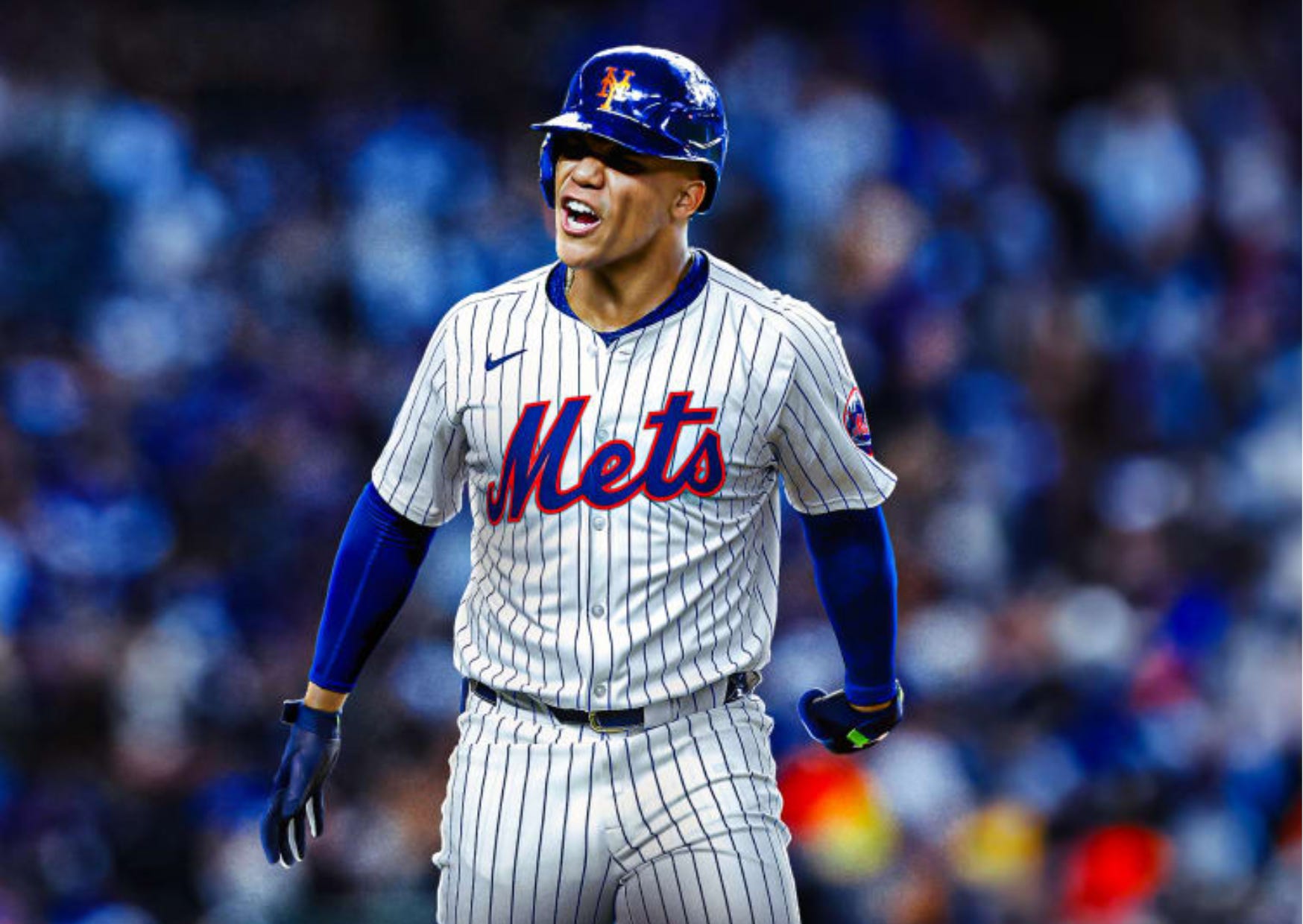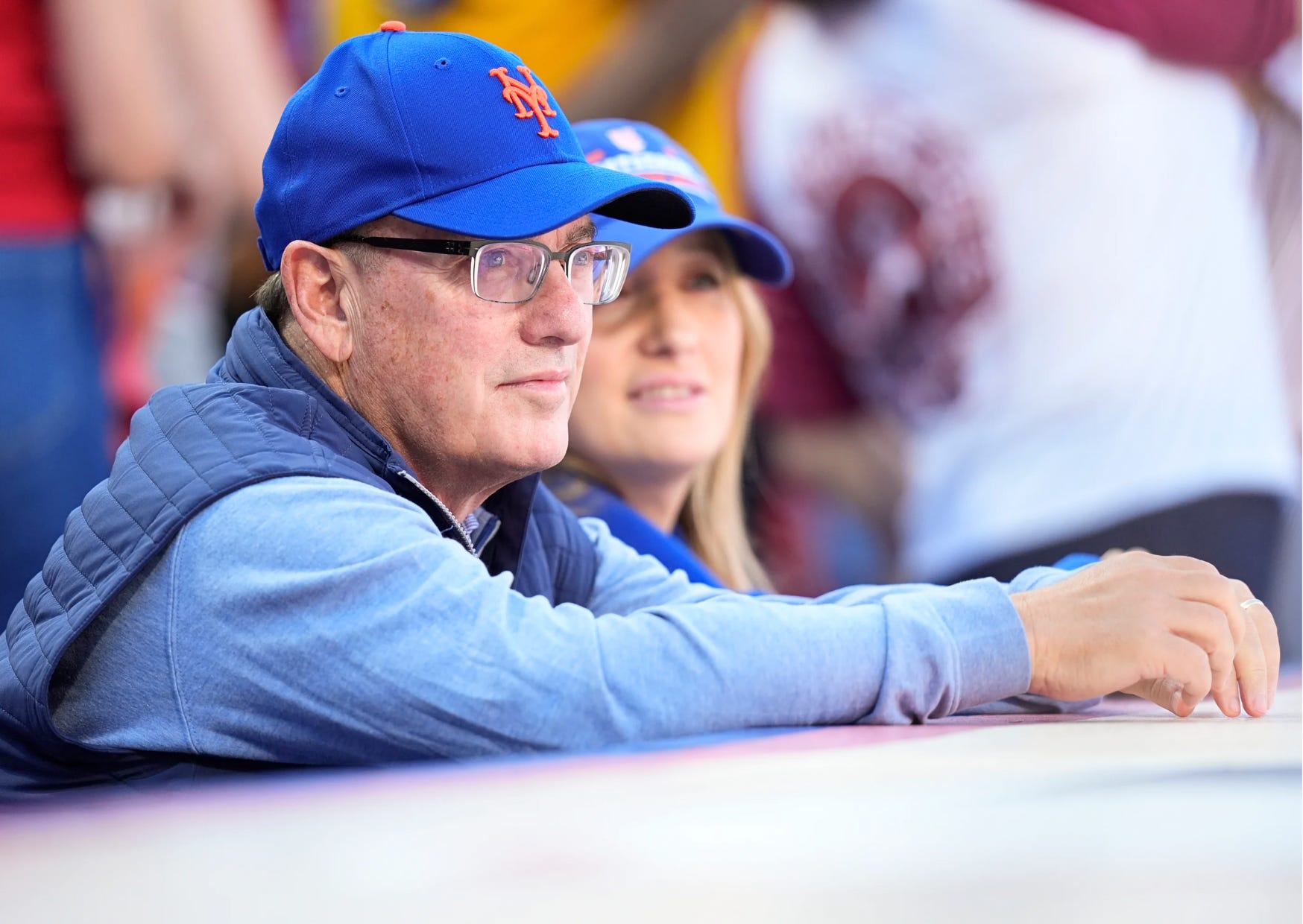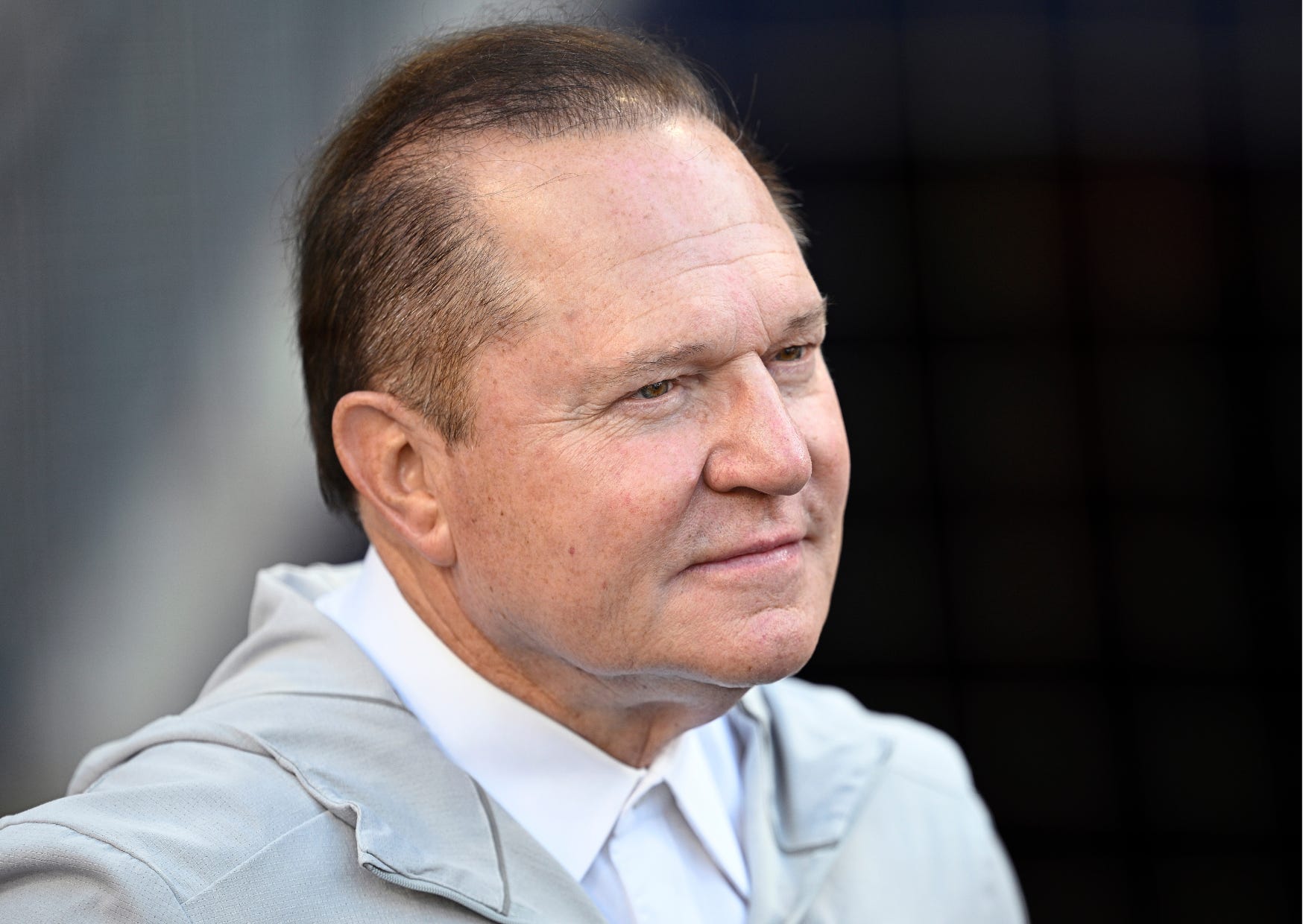Juan Soto’s $765 Million Contract Is A Bad Deal (But Steve Cohen Doesn’t Care)
In 2022, Juan Soto was widely considered the best young player in baseball. He was just 23 years old at the time but was already a two-time All-Star. He had a batting title, a World Series trophy, and 118 home runs in just five seasons as a professional. The Washington Nationals were in the middle of a rebuild, but sports owners aren’t dumb. No matter how many losing seasons the Nationals had to endure after their 2019 World Series championship, the Lerner family knew fans would fill the ballpark all summer long if a generational player like Juan Soto was still in the team’s lineup. So, the Nationals offered Soto an unimaginable contract — 15 years, $440 million. This would have been the largest contract in MLB history and the second-largest contract in U.S. professional sports history, only $10 million behind the $450 million extension the NFL’s Kansas City Chiefs gave Patrick Mahomes two years earlier. But it didn’t matter. Juan Soto turned down the deal. He hit 53 home runs in that year’s wildly entertaining home run derby days after the news leaked and then was traded just two weeks after that, sent to the San Diego Padres for a package of six players, including several MLB players and multiple top ten MLB draft picks. It was a wild sequence of events. Soto said the Nationals leaking the offer made him “really uncomfortable,” and the only reason why he didn’t want to re-sign at that number was because he wasn’t convinced the team was committed to winning. However, on the flip side, Scott Boras showed his cards. When talking to reporters at that year’s MLB all-star game, Boras said he wanted Soto to hit the open market because a 25 to 26-year-old superstar free agent could be worth “a billion dollars.” Everyone assumed Boras was just exaggerating for effect on behalf of his client, as the largest MLB contract at the time was worth $426.5 million. But just two years later, while Boras wasn’t technically accurate in his estimate, he also wasn’t far off. Juan Soto’s $765 million contract with the New York Mets is the largest contract in sports history — MLB or any other sport. When including potential opt-out payments, the deal could be worth more than $800 million over the next 15 years, and Soto is now in line to earn roughly $140,000 a day, or $6,000 an hour, from now until 2040. Largest Contracts In MLB History
But just because the Mets won the bidding war doesn’t mean they actually won the deal. Soto is an incredible player, and superstars rarely hit free agency in their 20s. However, this deal is worth hundreds of millions more than MLB front office executives estimated, and history tells us the Mets might eventually regret it. Scott Boras ran Juan Soto’s free agency like a chess match. The man who has negotiated more than $10 billion in MLB contracts over the last several decades — all guaranteed — established a strict set of rules at the beginning of the offseason. Boras told interested teams they must fly out to California for in-person pitches with Juan Soto. There were three rounds of bidding, and all meetings were held at the Pendry Hotel in Newport Beach, conveniently located a mile from Boras’ office. Lower payroll teams like the Kansas City Royals and Tampa Bay Rays reportedly “checked in” on Soto early in the process. But everyone knew smaller market teams wouldn’t be able to afford him, and the deal really came down to four teams: the New York Yankees, Toronto Blue Jays, Boston Red Sox, and Los Angeles Dodgers. Each team delivered a pitch tailored to Soto. Some teams talked about where they would put him in the lineup and how they could take care of his family, while other teams bragged about their farm systems and how they were committed to winning. Huddle Up is a reader-supported publication. To receive new posts and support my work, consider becoming a free or paid subscriber. But while everyone else followed the rules set by MLB superagent Scott Boras, New York Mets owner Steve Cohen knew his best chance of winning was to go off script. In the eleventh hour, Cohen insisted that his last meeting with Juan Soto be held at his personal residence in Beverly Hills, not the Pendry Hotel in Newport Beach. Soto and Boras agreed and arrived at the $30 million house days later. Cohen and his wife, Alex, welcomed them and laid out a vision for the future, talking about how Cohen would do whatever it took to bring a championship back to Queens. The deal didn’t close until a few days later, but it was over then. That’s because Cohen ended up doing exactly what everyone expected him to do — figure out what the next highest team was offering and then give Juan Soto a few million more than that. The New York Yankees final offer came in at 16-years, $760 million. So, Cohen submitted an offer of $765 million over 15 years. In all likelihood, he probably would have gone even higher if it was necessary, but that difference in money and Cohen’s willingness to spend whatever it took to build a roster got Soto to commit to the Mets. Many people will look at this deal and say it makes sense because it’s worth only $65 million more than Shohei Ohtani’s contract and five years longer in length, meaning Soto is earning much less than the Japanese star on an average annual value basis. But that’s not the correct way to look at it. Ohtani’s contract is an outlier and needs to be adjusted. For example, Ohtani’s deal is technically worth $700 million over ten years. However, $680 million of that $700 million, or 97% of the deal’s total value, is deferred, meaning Ohtani only receives $2 million of his $70 million salary each year. The rest of Ohtani’s deal will be paid out over time, and he will eventually walk away with all $700 million from the Dodgers. But after accounting for inflation and the time value of money, MLB valued Ohtani’s contract at $460 million for luxury tax purposes. A $460 million deal would have still made Ohtani baseball’s highest-paid player, but it’s only $35 million more than Mike Trout’s contract and more in line with reality. MLB rules force teams to put the deferred money into an escrow account within two years from when it was earned, meaning the $68 million in 2023 annual salary that the Dodgers owe Ohtani a decade from now is likely already sitting in an escrow account. MLB teams have used deferred money for decades, and it is not necessarily a controversial topic. However, many teams choose not to use it because players prefer cash upfront, and owners don’t love handing out lump sum payments in the future. The Dodgers are a different story, though. Over the last few years, the 2024 World Series champions have handed out over a billion dollars in deferred money. This includes deals with players like Shohei Ohtani, Mookie Betts, Freddie Freeman, Teoscar Hernández, J.D. Martinez, and, most recently, Blake Snell and Tommy Edman. The Dodgers are comfortable doing this because MLB rules allow them to invest the money while it sits in escrow. There are some guidelines, sure, with the Dodgers only permitted to invest in “registered and unrestricted readily marketable securities.” But the Dodgers do it anyway because they are owned by Guggenheim, a $335 billion asset management firm. Guggenheim can then invest this money while it’s in escrow, and as long as they beat MLB’s 5% discount rate on deferred payments, the Dodgers can theoretically lower the total cost of a player by earning money on the cash today. Huddle Up is a reader-supported publication. To receive new posts and support my work, consider becoming a free or paid subscriber. I tell you all of this because it is directly relevant to Juan Soto’s contract. Where Shohei Ohtani has agreed to defer 97% of his $700 million contract, turning it into a $460 million deal based on the present value of future cash flows, Juan Soto’s $765 million contract with the Mets doesn’t contain a single deferred payment. That means Soto’s contract is worth $300 million more today than Ohtani’s. And that’s without even mentioning the fact that Ohtani’s deal pays for itself, as his arrival this year helped the Dodgers bring in an additional $100 million in revenue, primarily from increased ticket prices, more merchandise sales, and larger sponsorship deals. Juan Soto is a tremendous player. But let’s not kid ourselves: International brands aren’t lining up to sponsor the Mets next year based on his arrival, and it would be hard to find a single MLB executive who truly thinks Soto is worth $765 million. However, it’s not like Steve Cohen doesn’t know this. He does and decided to do the deal anyway. Steve Cohen is the richest owner in baseball, a hedge fund manager worth more than $20 billion. He grew up rooting for the Mets as a kid on Long Island, and he has promised to invest whatever money it takes to bring a World Series title to Mets fans. In fact, Cohen has been so aggressive with his money since buying the Mets for a record $2.4 billion in 2020 that MLB literally added a new category to its luxury tax system. Nicknamed the “Cohen Tax,” MLB teams now have to pay additional luxury tax fees if they exceed that season’s payroll threshold by $20 million or more. Take the 2023 season, for instance. Despite posting a losing record and missing the playoffs, Steve Cohen and the Mets dropped $420 million on payroll that season, including $319 million in salaries and $101 million in luxury tax payments. This level of aggressiveness is precisely why Steve Cohen decided to commit nearly $1 billion to Juan Soto. Despite Soto’s less-than-stellar fielding and baserunning, he’s a generational talent at the plate and only recently celebrated his 26th birthday. That’s not to say Steve Cohen won’t eventually regret this deal. Soto will be 40 years old during the final years of the contract, and it would certainly be hard to write $50 million-plus checks annually to a guy who may not even be on the team at that point. But then again, Steve Cohen told Mets fans in 2020 that he’s “not trying to make money” on the team and only cares about winning. So, if Juan Soto helps bring a World Series championship back to Queens for the first time since 1986, then something tells me Steve Cohen would happily do this deal all over again. If you enjoyed this breakdown, share it with your friends. Join my sports business community on Microsoft Teams. Huddle Up is a 3x weekly newsletter that breaks down the business and money behind sports. If you are not a subscriber, sign up and join 125,000+ others who receive it directly in their inbox each week. You’re currently a free subscriber to Huddle Up. For the full experience, upgrade your subscription.
© 2024 |



